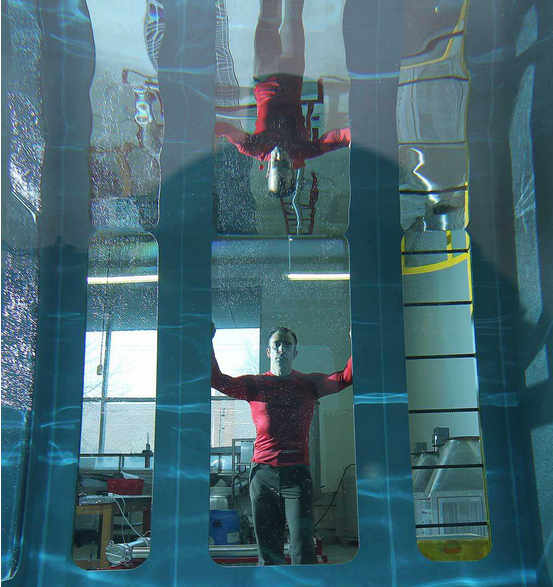
Published on: April 13, 2014
The problem with electricity is if you don’t use it right away it goes to waste, which makes renewable energy tricky.
Enter two plugged-in University of Windsor engineers who have developed a way to store energy underwater.
Rupp Carriveau and David Ting, in fact, have helped engineer the world’s first grid-connected offshore energy storage system, being built off Toronto Island by the cutting-edge firm Hydrostor to serve Canada’s biggest city.
“It’s really exciting,” Carriveau said. “It’s one of the emerging large-scale energy-storage technologies. But right now, if the grid called a wind farm up and said give us all you’ve got, the wind farm might say, ‘Sorry, you should have called us at 3 in the morning, because that’s when the wind was blowing.'”
Yet for all its high-tech gadgetry, the energy-storage concept is old and rather simple.
Off-peak energy is used to compress air into huge balloons — actually, marine bags like the kind used to lift sunken ships. If it’s deep enough, the water pressure keeps the air squished tight. Later, when electricity is needed, you turn a valve on land and the compressed air rushes out through a hose, powering an electricity generator and — zap! — your air-conditioning runs full steam even if the wind isn’t blowing or sun isn’t shining.
“You get about 65 per cent of the energy back,” Carriveau said. “When you consider that the energy was going to be thrown away, that’s pretty good.”
But why Windsor?
In 2010, the founder of Hydrostor, Cameron Lewis, had what Rupp calls a “napkin drawing” about his idea and asked around for who could help. Provincial funding bodies pointed to Windsor, since the university had done work on stuffing compressed air into salt mines, which requires more space and is less adaptable.
In fact, the University of Windsor is such a leader in the field, it will host the Offshore Energy and Storage Symposium July 10 and 11, attracting 250 experts from around the world.
“Windsor is on the cutting-edge,” Carriveau said.
Part of the appeal of offshore energy storage stems from how much electricity is lost in transmission. Storing energy near where it’s made makes sense. Oil and natural gas drilling, solar and wind, and even wave and tide power are growing offshore, making underwater storage more attractive.
Plus, Carriveau believes offshore energy storage fits the “blue economy,” the environmentally friendly industry based around water on a planet that is only 30 per cent land. Marine life tends to flourish around offshore rigs.
Hydrostor CEO Curtis VanWalleghem said the efforts of Carriveau and Ting helped launch the Island Demonstration Facility, which should start operating off Toronto Island in July or August with six months of testing.
“It all kind of started with work we did with the University of Windsor dating back to 2010,” said VanWallegham, noting that his company already has a contract in the Caribbean and is bidding on at least four more. “We think there is a fair bit of potential.”
The technology has hurdles, however. How do you install a system under water? How do you maintain it? And what about the danger of an inflated bag bursting and unleashing an air bubble big enough to capsize a freighter?
Ting’s expertise in turbulence came in handy here. He devised a sturdy metal grid — for which the university has a patent pending — that is bolted in above the airbag so that if it bursts, the air is dissipated over a wide area, rendering the big bubble harmless.
Though still unproven on a commercial basis, Ting is confident about offshore energy storage: “To solve the intermittent nature of renewable energies, this is one of the most promising solutions.”
Carriveau agrees, and thinks Windsor is well-suited to handle construction of such systems, given the area’s manufacturing background.
“This is coming,” Carriveau said. “So for the Windsor area, it’s a great opportunity, given that we’re on the front of this wave. Once we get our name established as a leader in this area, we’re good to go.”
